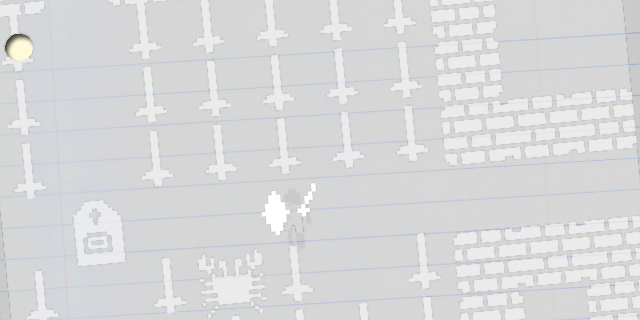
Genre 101 looks at the past and present of a game genre to find lessons about what defines it. In this installment, Graham talks with Chris Dominowski about the Japanese-style action-RPG.
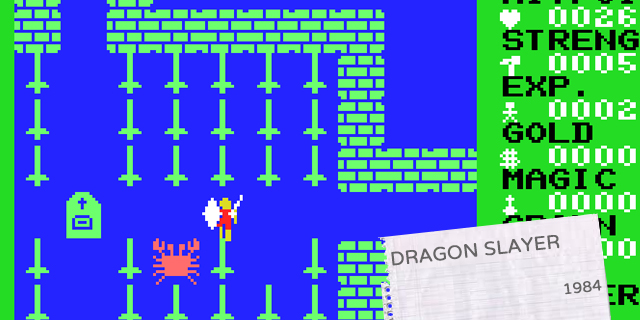
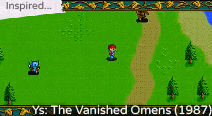
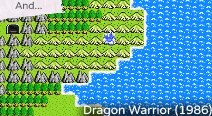
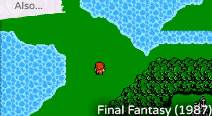
A call to action
 Chris Dominowski: Where better to start than with what is arguably the grandfather of all Japanese action-RPGs? (For the record, we will be dealing with games that distinctly befit the style of Japanese RPGs in action systems, not just action-RPGs made in Japan.) Dragon Slayer was an early role-playing effort from Nihon Falcom, and borrowed heavily from other rudimentary RPGs at the time, such as Intellivision hit Advanced Dungeons & Dragons. However, Dragon Slayer was able to give the formula a flavor that was distinctly Japanese, much like The Black Onyx did for dungeon-crawlers. The visual style and progression mechanics laid a very basic framework of how the genre would eventually evolve, and became as roadmap for future games.
Chris Dominowski: Where better to start than with what is arguably the grandfather of all Japanese action-RPGs? (For the record, we will be dealing with games that distinctly befit the style of Japanese RPGs in action systems, not just action-RPGs made in Japan.) Dragon Slayer was an early role-playing effort from Nihon Falcom, and borrowed heavily from other rudimentary RPGs at the time, such as Intellivision hit Advanced Dungeons & Dragons. However, Dragon Slayer was able to give the formula a flavor that was distinctly Japanese, much like The Black Onyx did for dungeon-crawlers. The visual style and progression mechanics laid a very basic framework of how the genre would eventually evolve, and became as roadmap for future games.
 Graham Russell: So what was that flavor, exactly? What should people be looking for that distinguishes the Japanese style of action-RPG from any other game with real-time combat and a fantasy setting?
Graham Russell: So what was that flavor, exactly? What should people be looking for that distinguishes the Japanese style of action-RPG from any other game with real-time combat and a fantasy setting?
 For modern purposes, it means fast, flashy combat with variety coming more from acquired skills than new weapons. Western titles in general have slower, more methodical combat where your strategy changes based on your equipment (like in the Elder Scrolls, Monster Hunter and Souls series). Back in these simpler times, when the technology was not quite there, the defining JRPG hallmark of having a greater focus on narrative than exploration or expression still holds true, albeit in a much more limited fashion.
For modern purposes, it means fast, flashy combat with variety coming more from acquired skills than new weapons. Western titles in general have slower, more methodical combat where your strategy changes based on your equipment (like in the Elder Scrolls, Monster Hunter and Souls series). Back in these simpler times, when the technology was not quite there, the defining JRPG hallmark of having a greater focus on narrative than exploration or expression still holds true, albeit in a much more limited fashion.
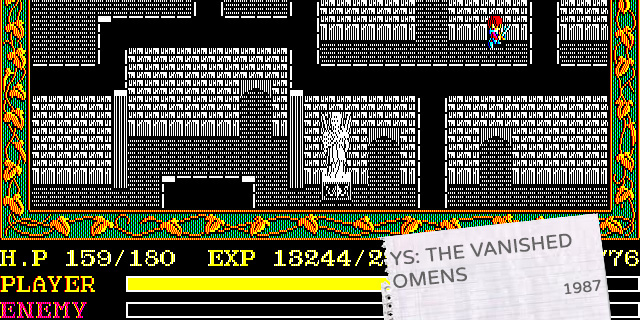
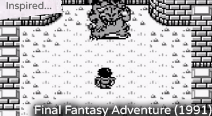
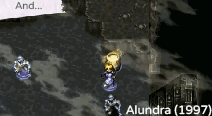
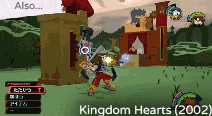
Falcom keeps it simple
 In the action-RPG’s early days, Falcom regularly shaped experiences in its native country. Its Ys series, arguably the company’s most internationally-known franchise, started as a rather unconventional RPG for any point in gaming history. Using a fast-paced combat system with no attack button, a level cap that the player is expected to hit before the halfway point of the game and only a handful of equipment pieces, Ys was a skill-based RPG in a way that few others are. Yet, it still retained the soul of a JRPG with its stat management and level structure.
In the action-RPG’s early days, Falcom regularly shaped experiences in its native country. Its Ys series, arguably the company’s most internationally-known franchise, started as a rather unconventional RPG for any point in gaming history. Using a fast-paced combat system with no attack button, a level cap that the player is expected to hit before the halfway point of the game and only a handful of equipment pieces, Ys was a skill-based RPG in a way that few others are. Yet, it still retained the soul of a JRPG with its stat management and level structure.
 Forgoing an attack button certainly didn’t become a trend outside of the Ys series itself, but it definitely brought about a focus on positioning and tactics to combat. How else do you think this setup changed things, both for Ys and for action-RPGs in general?
Forgoing an attack button certainly didn’t become a trend outside of the Ys series itself, but it definitely brought about a focus on positioning and tactics to combat. How else do you think this setup changed things, both for Ys and for action-RPGs in general?
 While the majority of Ys’ innovative mechanics have remained unique to the series throughout the decades, the emphasis it placed on making a fast combat system with varying degrees of complexity have influenced the genre nearly across the board.
While the majority of Ys’ innovative mechanics have remained unique to the series throughout the decades, the emphasis it placed on making a fast combat system with varying degrees of complexity have influenced the genre nearly across the board.
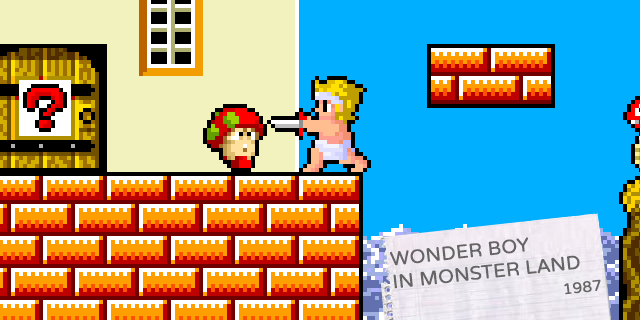
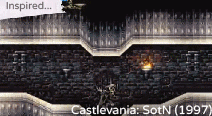
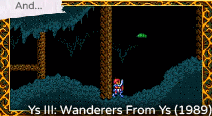
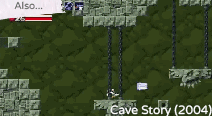
A new side of action-RPGs
 One of the first JRPGs to apply its mechanics to a sidescrolling perspective, Wonder Boy in Monster Land showed the versatility of the genre, as well as how the inherent strengths of an RPG might be combined with existing genres to make a deeper and more varied experience. Featuring branching paths and hidden collectibles, it laid the groundwork for many different action-RPG offshoots that have come into their own today.
One of the first JRPGs to apply its mechanics to a sidescrolling perspective, Wonder Boy in Monster Land showed the versatility of the genre, as well as how the inherent strengths of an RPG might be combined with existing genres to make a deeper and more varied experience. Featuring branching paths and hidden collectibles, it laid the groundwork for many different action-RPG offshoots that have come into their own today.
 So traditionally, what an action-RPG is has largely hewn to the top-down, wide-view sort of formula. How does the genre retain its identity in other contexts like this? At what point does it stop being an action-RPG and start being something else entirely?
So traditionally, what an action-RPG is has largely hewn to the top-down, wide-view sort of formula. How does the genre retain its identity in other contexts like this? At what point does it stop being an action-RPG and start being something else entirely?
 In my personal opinion, stat and equipment management is a fair signifier for RPG mechanics in a game. The degree of granularity of control the player has over modifying these things is what separates action-RPGs from simply games with RPG mechanics. If the player focuses just as much on developing the strengths of his or her character as the actual combat, I’d say it qualifies.
In my personal opinion, stat and equipment management is a fair signifier for RPG mechanics in a game. The degree of granularity of control the player has over modifying these things is what separates action-RPGs from simply games with RPG mechanics. If the player focuses just as much on developing the strengths of his or her character as the actual combat, I’d say it qualifies.
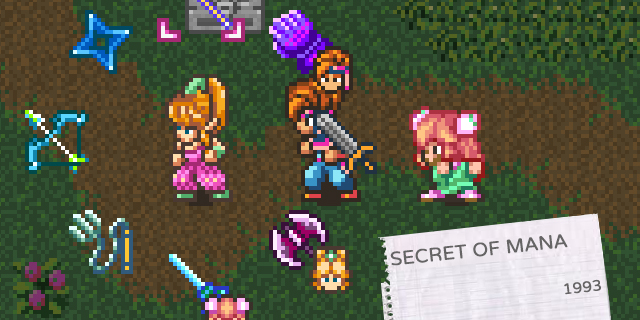
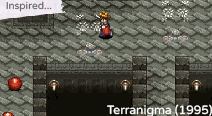
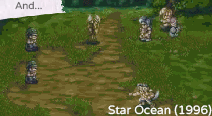
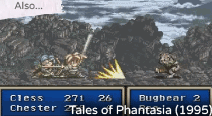
Bringing it all together
 While its predecessor might have been an early example of how a portable action-RPG could be executed, as well as adapting the Zelda-style top-down screen-by-screen adventure into traditional RPG trappings, Secret of Mana had a much greater influence on how games would eventually develop in Japan. One major impact: its inclusion of multiplayer, which was then nigh-unthinkable in story-driven games. Plus, it expanded upon the first game’s Zelda inspirations by bringing updates seen in A Link to the Past, such as auto-scrolling screens.
While its predecessor might have been an early example of how a portable action-RPG could be executed, as well as adapting the Zelda-style top-down screen-by-screen adventure into traditional RPG trappings, Secret of Mana had a much greater influence on how games would eventually develop in Japan. One major impact: its inclusion of multiplayer, which was then nigh-unthinkable in story-driven games. Plus, it expanded upon the first game’s Zelda inspirations by bringing updates seen in A Link to the Past, such as auto-scrolling screens.
 Multiplayer capability definitely expands and enhances the action-RPG formula, though it’s always tried to balance this out with a focus on making the single-player experience a complete one. What started in Secret of Mana has certainly continued in the Japanese branch, while Western games have sought to make multiplayer the priority.
Multiplayer capability definitely expands and enhances the action-RPG formula, though it’s always tried to balance this out with a focus on making the single-player experience a complete one. What started in Secret of Mana has certainly continued in the Japanese branch, while Western games have sought to make multiplayer the priority.
 Aside from just making an MMO or a dungeon-crawler, reconciling the desire for an engaging narrative and engaging combat in an RPG has always been difficult, especially for JRPGs, where the latter is of utmost importance. Thankfully, the twitchy combat of an action-RPG alleviates this problem somewhat, although the problem remains of what to do between skirmishes.
Aside from just making an MMO or a dungeon-crawler, reconciling the desire for an engaging narrative and engaging combat in an RPG has always been difficult, especially for JRPGs, where the latter is of utmost importance. Thankfully, the twitchy combat of an action-RPG alleviates this problem somewhat, although the problem remains of what to do between skirmishes.
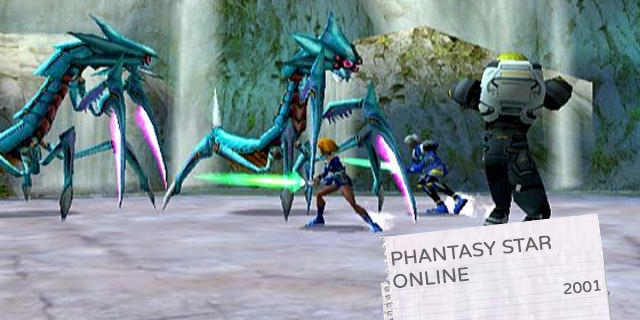
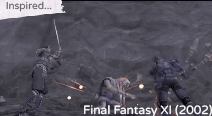
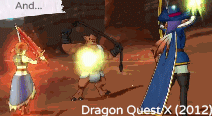
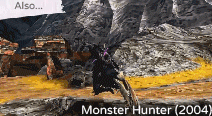
Never fight alone
 As what was essentially the first console MMO, Phantasy Star Online‘s main duty was showcasing the online capabilities of the Dreamcast, while retaining the necessary heart of the series thus far. Luckily, it made a big impact with its release, and was able to introduce legions of console gamers to the world of online RPGs, long considered PC-exclusive territory. The game’s 3D Diablo-inspired combat system allowed for a greater deal of variety and replay value than what had been seen in JRPGs as of yet. Even to this day, Phantasy Star Online remains the standard by which all console MMORPGs are judged.
As what was essentially the first console MMO, Phantasy Star Online‘s main duty was showcasing the online capabilities of the Dreamcast, while retaining the necessary heart of the series thus far. Luckily, it made a big impact with its release, and was able to introduce legions of console gamers to the world of online RPGs, long considered PC-exclusive territory. The game’s 3D Diablo-inspired combat system allowed for a greater deal of variety and replay value than what had been seen in JRPGs as of yet. Even to this day, Phantasy Star Online remains the standard by which all console MMORPGs are judged.
 MMOs, in a large part, could be seen as a subset of the Japanese action-RPG, with many staying close to the time-tested formula. But there’s certainly been a hurdle to overcome in the online era: reconciling the action with online synchronization. We’ve seen the development of animation-priority systems in MMOs and games like Monster Hunter; do games with that sort of setup remain action-RPGs?
MMOs, in a large part, could be seen as a subset of the Japanese action-RPG, with many staying close to the time-tested formula. But there’s certainly been a hurdle to overcome in the online era: reconciling the action with online synchronization. We’ve seen the development of animation-priority systems in MMOs and games like Monster Hunter; do games with that sort of setup remain action-RPGs?
 In a Japanese action-RPG, players want fast, flashy, varied combat combined with a focus on crafting a compelling story with memorable characters. Combat in many MMOs is often methodical and strategic over a longer span of time, lacking the genre’s signature twitchy action. Even Monster Hunter falls outside of the boundaries, learning from games like PSO but borrowing much more from Western traditions.
In a Japanese action-RPG, players want fast, flashy, varied combat combined with a focus on crafting a compelling story with memorable characters. Combat in many MMOs is often methodical and strategic over a longer span of time, lacking the genre’s signature twitchy action. Even Monster Hunter falls outside of the boundaries, learning from games like PSO but borrowing much more from Western traditions.
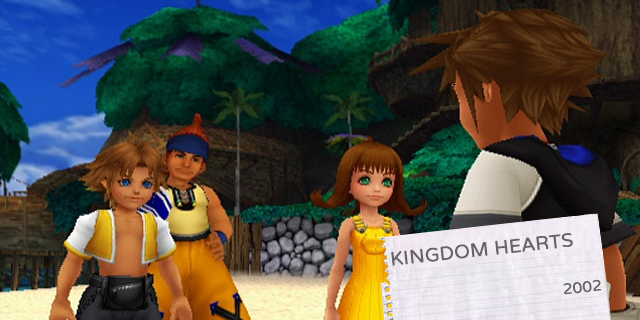
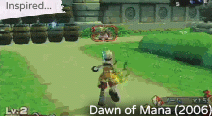
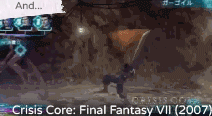
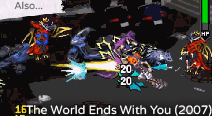
A Disney-fueled explosion
 Kingdom Hearts was one of the first Japanese action-RPGs to deliver a truly fast and fluid combat system that simply could not have been accomplished given the technical limitations of previous consoles. While many criticize the game for supposedly emphasizing style over substance in its gameplay systems — and there may be some truth to that — the fact is that a huge number of future action-RPGs would use it as a model. By encouraging multitasking and combo management over attack timing and positioning, Kingdom Hearts was kinetic and flowing in a way that was difficult, if not impossible, before.
Kingdom Hearts was one of the first Japanese action-RPGs to deliver a truly fast and fluid combat system that simply could not have been accomplished given the technical limitations of previous consoles. While many criticize the game for supposedly emphasizing style over substance in its gameplay systems — and there may be some truth to that — the fact is that a huge number of future action-RPGs would use it as a model. By encouraging multitasking and combo management over attack timing and positioning, Kingdom Hearts was kinetic and flowing in a way that was difficult, if not impossible, before.
 Kingdom Hearts may have been the genre’s biggest crossover hit. Was that just the Disney and Final Fantasy licenses pulling the game along to new audiences, or did Kingdom Hearts do something from a gameplay standpoint that was especially more appealing to a larger audience?
Kingdom Hearts may have been the genre’s biggest crossover hit. Was that just the Disney and Final Fantasy licenses pulling the game along to new audiences, or did Kingdom Hearts do something from a gameplay standpoint that was especially more appealing to a larger audience?
 It would be a lie to say that a good number of series fans initially tried the game based on concept alone, but there is a lot more to the game than that. It was one of the first 3D titles to truly deliver on the genre’s touchstones of flashy visuals and speedy twitch combat, while retaining a consistent and fluid frame rate. Kingdom Hearts was the perfect storm of vision and technology, and was thankfully released early on in the generation.
It would be a lie to say that a good number of series fans initially tried the game based on concept alone, but there is a lot more to the game than that. It was one of the first 3D titles to truly deliver on the genre’s touchstones of flashy visuals and speedy twitch combat, while retaining a consistent and fluid frame rate. Kingdom Hearts was the perfect storm of vision and technology, and was thankfully released early on in the generation.
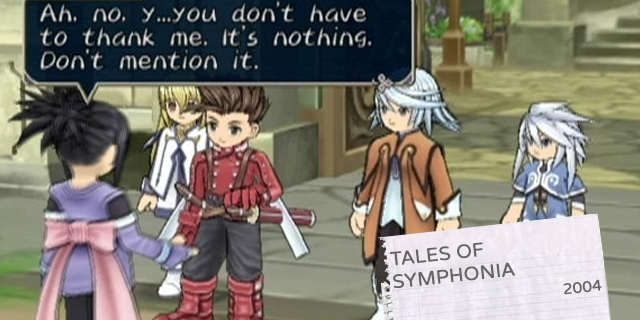
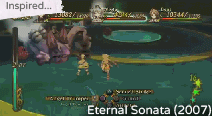
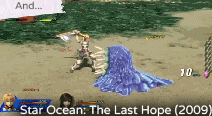
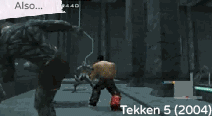
Remixing past ideas
 If Kingdom Hearts showed how the action-RPG could evolve into uncharted territory, Tales of Symphonia showed how the very best of the genre thus far (and some ideas from other genres) could be combined into a single new and unique work. As the first 3D game in Namco’s Tales series, Symphonia took the fighter-turned-RPG inspirations of the previous entries and added a new layer of depth to the proceedings. With the introduction of a multi-plane battle system, each player could focus on executing their strategies without necessarily interrupting each other. The series’ lauded focus on multiplayer benefited from this, too, as skilled fighters could intentionally steer battle planes together to participate in combo maneuvers.
If Kingdom Hearts showed how the action-RPG could evolve into uncharted territory, Tales of Symphonia showed how the very best of the genre thus far (and some ideas from other genres) could be combined into a single new and unique work. As the first 3D game in Namco’s Tales series, Symphonia took the fighter-turned-RPG inspirations of the previous entries and added a new layer of depth to the proceedings. With the introduction of a multi-plane battle system, each player could focus on executing their strategies without necessarily interrupting each other. The series’ lauded focus on multiplayer benefited from this, too, as skilled fighters could intentionally steer battle planes together to participate in combo maneuvers.
 The Tales series, more than others on this list, tries to maintain its traditional-JRPG status despite its action-heavy combat. You can play with simple button presses and let the system handle movement and positioning, and you’re not necessarily diminishing your chances of winning. How do you balance something like that? Does Tales lose something by embracing this hybrid model?
The Tales series, more than others on this list, tries to maintain its traditional-JRPG status despite its action-heavy combat. You can play with simple button presses and let the system handle movement and positioning, and you’re not necessarily diminishing your chances of winning. How do you balance something like that? Does Tales lose something by embracing this hybrid model?
 Good games are often easy to learn and hard to master. If you play through the game nonchalantly on an easy difficulty, then you can certainly get by with mere button-mashing. However, if you challenge yourself and dive into the minutia of the combat system of a Tales game, then you will see that there is a great deal below the surface. Especially if you are playing with friends, timing multi-character combos and bridging spells becomes a delicate dance of skill and reflex that tests a player’s ability to do more than hit the attack button. This is encouraged by the series’ Grade system, which rewards you with bonus points for your finesse after each encounter.
Good games are often easy to learn and hard to master. If you play through the game nonchalantly on an easy difficulty, then you can certainly get by with mere button-mashing. However, if you challenge yourself and dive into the minutia of the combat system of a Tales game, then you will see that there is a great deal below the surface. Especially if you are playing with friends, timing multi-character combos and bridging spells becomes a delicate dance of skill and reflex that tests a player’s ability to do more than hit the attack button. This is encouraged by the series’ Grade system, which rewards you with bonus points for your finesse after each encounter.
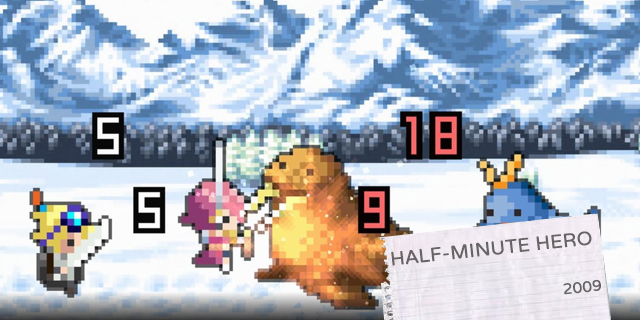
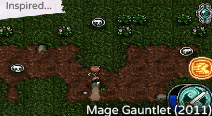
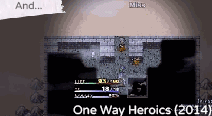

No time to waste
 In an attempt to completely buck the genre trends of tedious level-grinding, huge time commitments and convoluted stories, Half-Minute Hero tasked the player with saving the world in the next 30 seconds. By distilling the action-RPG down to its most basic components, while maintaining the frenetic pace of an outright action game, Hero was able to offer the core RPG motivations to those who may not have been keen on the time investment. This kind of wild experimentation is what keeps a genre fresh, and the fact that we saw it in such a notable release proves that there are still hundreds of ways in which the JRPG could be applied to other types of game.
In an attempt to completely buck the genre trends of tedious level-grinding, huge time commitments and convoluted stories, Half-Minute Hero tasked the player with saving the world in the next 30 seconds. By distilling the action-RPG down to its most basic components, while maintaining the frenetic pace of an outright action game, Hero was able to offer the core RPG motivations to those who may not have been keen on the time investment. This kind of wild experimentation is what keeps a genre fresh, and the fact that we saw it in such a notable release proves that there are still hundreds of ways in which the JRPG could be applied to other types of game.
 This has been a trend in recent years: strip everything away from a game until the bare minimum is left, and make that small core a compelling one. But without the scope and breadth the genre usually brings, does it really feel the same?
This has been a trend in recent years: strip everything away from a game until the bare minimum is left, and make that small core a compelling one. But without the scope and breadth the genre usually brings, does it really feel the same?
 Undertaking the task of reducing a genre down to its core elements is a task that will separate the wheat from the chaff amongst designers. Asking yourself just what are the core engagements of a genre can often lead to conflicts in and of itself; you may find some things to be irreducible in their base form. However, you may find things to substitute which are suitable in a practical sense. For example, a comedy is far simpler to craft in a shorter time than a drama.
Undertaking the task of reducing a genre down to its core elements is a task that will separate the wheat from the chaff amongst designers. Asking yourself just what are the core engagements of a genre can often lead to conflicts in and of itself; you may find some things to be irreducible in their base form. However, you may find things to substitute which are suitable in a practical sense. For example, a comedy is far simpler to craft in a shorter time than a drama.
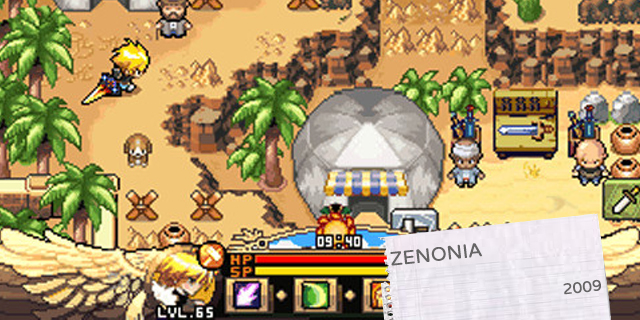
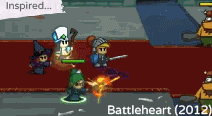
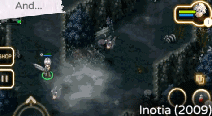

Adapting to the pocket
 The smartphone represented the dawn of a new era for gaming. Every genre needed to adapt to the unavoidable shift in design, business strategy and presentation necessary to thrive in this new market. One of the first breakout hits for mobile action-RPGs was Zenonia, a title out of South Korea that showed how the genre could work on a touch screen. Using fast combat meant to be completed in bite-sized increments, Zenonia does not require the same level of time or energy that is asked of a player for a traditional RPG, and thus made it a perfect fit for mobile devices. The game was able to succeed where others on the platform failed by accounting for the limitations of smartphone hardware, as well as the attention spans of the average mobile game player, making it a textbook example of how to do the genre on this new platform.
The smartphone represented the dawn of a new era for gaming. Every genre needed to adapt to the unavoidable shift in design, business strategy and presentation necessary to thrive in this new market. One of the first breakout hits for mobile action-RPGs was Zenonia, a title out of South Korea that showed how the genre could work on a touch screen. Using fast combat meant to be completed in bite-sized increments, Zenonia does not require the same level of time or energy that is asked of a player for a traditional RPG, and thus made it a perfect fit for mobile devices. The game was able to succeed where others on the platform failed by accounting for the limitations of smartphone hardware, as well as the attention spans of the average mobile game player, making it a textbook example of how to do the genre on this new platform.
 It seems like the population of the entire Asian continent has developed a mobile action-RPG at some point, with the unbelievable proliferation of titles on iOS and Android. Why do you think this is? Are they “easy” to design? It doesn’t feel like a button-free platform’s a particularly great fit.
It seems like the population of the entire Asian continent has developed a mobile action-RPG at some point, with the unbelievable proliferation of titles on iOS and Android. Why do you think this is? Are they “easy” to design? It doesn’t feel like a button-free platform’s a particularly great fit.
 While I feel that it is unfair to call any game “easy” to design, there is a nugget of truth there. Touch screens are more geared towards games with simplified input schemes, and the mobile scene takes more kindly to shorter experiences. However, there are some things about Japanese action-RPGs in particular that are naturally suited for such a platform, such as battles not lasting more than a few seconds and the formula of incremental iteration over time. Consider the original Ys, which handled its combat without using buttons at all. Such a game is a perfect fit for mobile devices.
While I feel that it is unfair to call any game “easy” to design, there is a nugget of truth there. Touch screens are more geared towards games with simplified input schemes, and the mobile scene takes more kindly to shorter experiences. However, there are some things about Japanese action-RPGs in particular that are naturally suited for such a platform, such as battles not lasting more than a few seconds and the formula of incremental iteration over time. Consider the original Ys, which handled its combat without using buttons at all. Such a game is a perfect fit for mobile devices.
GIFs by Christian Stewart.



















